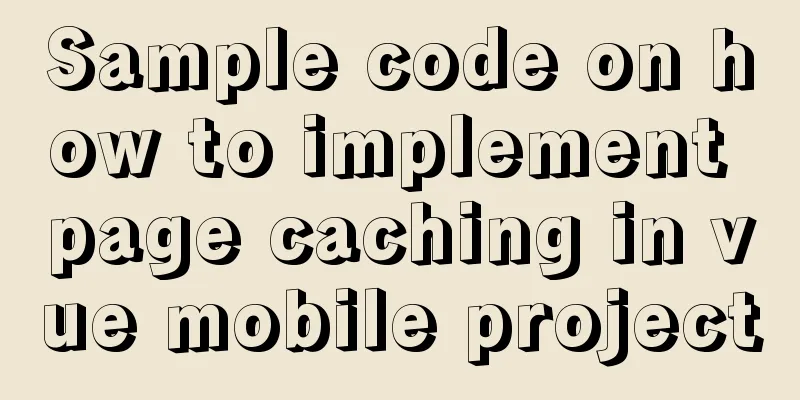Web componentd component internal event callback and pain point analysis

Written in frontI have been working on Web components (WC) recently and have achieved some initial results. But today I want to take a look at WC again. What exactly is WC?Simply put, Web Component encapsulates components in the form of HTML tags, and no additional JS code is required when using them. Components are the development direction of the front-end. Putting aside the surrounding technology ecosystem, React and Vue are both component frameworks. Therefore, WC can be seen as an extension of the original label. In the final analysis, it is still a label! Similar to the Since Google controls the Chrome browser, it has been promoting the browser's native components, namely the Web Components API. Compared with third-party frameworks, native components are simple, direct and intuitive, do not need to load any external modules, and have a small amount of code. Everything seems perfect, and it seems that it can be used to replace React, Vue and the like. Current flawsThere are some minor issues when using it with other web frameworks, which can cause some problems in the development experience. 1. Callback of component internal events For example, the OK button in a pop-up component (
class myDialog extends HTMLElement {
// ...
connectedCallback() {
const shadowRoot = this.attachShadow({ mode: 'open' });
shadowRoot.innerHTML = `
<div class="dialog">
<div class="dialog-content">
<div class="dialog-body">
Pop-up content</div>
<button id="okBtn">OK</button>
</div>
</div>
`;
shadowRoot.querySelector('#okBtn').addEventListener('click', () => {
// Define events inside the component this.dispatchEvent(new CustomEvent('okBtnFn'));
});
}
}
customElements.define('my-dialog', myDialog); The current solution is to use
<my-dialog></my-dialog>
<script>
export default {
created() {
document.addEventListener('okBtnFn', function(){
// Click the pop-up button to trigger the callback event});
}
}
</script>2. Component style coverage For developers, it is inevitable that they will need to adjust the internal styles of components. Whether you use 3. Relative path problem of internal resources in componentsCurrently, any component directly based on Custom Element v1, Template and HTML Import cannot be completely resource independent - using any resource files encapsulated internally without knowing the user's environment and without adding additional restrictions to the user. For example, if you have a custom icon component:
class MyIcon extends HTMLElement {
static get observedAttributes() { return ['name','size','color'] }
constructor() {
super();
const shadowRoot = this.attachShadow({ mode: 'open' });
shadowRoot.innerHTML = `
<svg class="icon" id="icon" aria-hidden="true" viewBox="0 0 1024 1024">
<use id="use"></use>
</svg>
}
attributeChangedCallback (name, oldValue, newValue) {
if( name == 'name' && this.shadowRoot){
// If there is no icon.svg file in the root directory of the project being used, then gg
this.use.setAttributeNS('http://www.w3.org/1999/xlink', 'xlink:href', `./icon.svg#icon-${newValue}`);
}
}
}
customElements.define('my-icon', MyIcon);If there is no icon.svg file in the root directory of the project you are using, then gg. If you use a cdn path here, there will be cross-domain issues. 4. Form component value acquisition problemThe value of the <input>, <textarea> or <select> tag in the Shadow DOM will not be automatically associated in the form. Sample code:
// web component
class InputAge extends HTMLElement {
constructor() {
super();
}
// connect component
connectedCallback() {
const shadow = this.attachShadow({ mode: 'closed' });
shadow.innerHTML = `<input type="number" placeholder="age" min="18" max="120" />`;
}
}
// register component
customElements.define( 'input-age', InputAge );After the WC component is used
<form id="myform">
<input type="text" name="your-name" placeholder="name" />
<input-age name="your-age"></input-age>
<button>submit</button>
</form>
<script>
const form = document.getElementById('myform');
form.addEventListener('submit', e => {
e.preventDefault();
console.log('Submitted data:');
const data = new FormData(form);
for (let nv of data.entries()) {
console.log(` ${ nv[0] }: ${ nv[1] }`);
}
});
</script> 5. OthersIn addition, the lack of data binding and state management is also a defect of WC, which will not be discussed here. Write at the backWC refers to enriching the DOM features of HTML, making HTML more reusable WC can be used as a native tag and run in any front-end framework or without a framework. In combination with the current mainstream technology stack, the main problem with WC is that in complex components, data communication and event delivery have certain usage costs. Compatibility issues, such as the The above is the detailed content of the internal event callback and pain point analysis of Web componentd components. For more information about Web componentd event callback and pain points, please pay attention to other related articles on 123WORDPRESS.COM! You may also be interested in:
|
<<: CentOS 8 system FTP server installation and passive mode configuration detailed tutorial
>>: What to do if the online MySQL auto-increment ID is exhausted
Recommend
js to call the network camera and handle common errors
Recently, due to business reasons, I need to acce...
IIS7~IIS8.5 delete or modify the server protocol header Server
Requirements: Remove HTTP response headers in IIS...
Introduction and usage of Angular pipeline PIPE
Preface PIPE, translated as pipeline. Angular pip...
Detailed code for building a multi-person video chat service based on webrtc on Ubuntu
WebRTC, which stands for Web Real-Time Communicat...
Creating a file system for ARM development board under Linux
1. Please download the Busybox source code online...
Detailed explanation of common usage of MySQL query conditions
This article uses examples to illustrate the comm...
A bug fix for Tomcat's automatic shutdown
Preface Recently, a Java EE web project that has ...
MySQL not null constraint case explanation
Table of contents Set a not null constraint when ...
Initialize Ubuntu 16.04 in three minutes, deploy Java, Maven, and Docker environments
Fast-Linux project address: https://gitee.com/uit...
How to change the website accessed by http to https in nginx
Table of contents 1. Background 2. Prerequisites ...
MySQL recursion problem
MySQL itself does not support recursive syntax, b...
MySQL uses custom sequences to implement row_number functions (detailed steps)
After reading some articles, I finally figured ou...
How to use DPlayer.js video playback plug-in
DPlayer.js video player plug-in is easy to use Ma...
SQL Practice Exercise: Online Mall Database Product Category Data Operation
Online shopping mall database-product category da...
Linux user and group command example analysis [switching, adding users, permission control, etc.]
This article describes the Linux user and group c...









